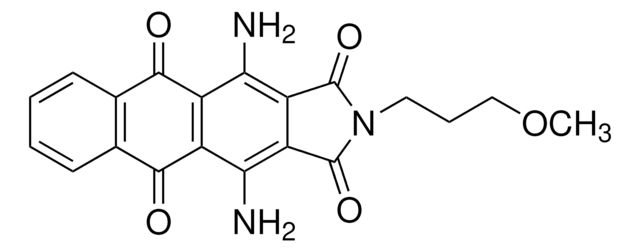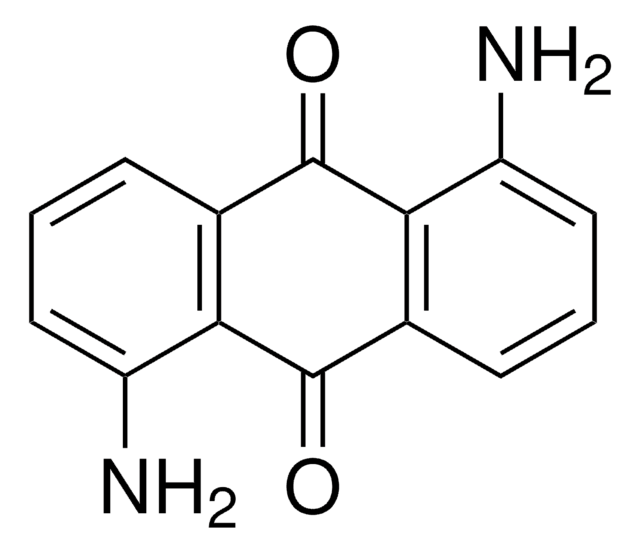215643
Disperse Blue 1
Dye content 30 %
Synonyme(s) :
1,4,5,8-Tetraaminoanthraquinone
About This Item
Produits recommandés
Forme
powder
Composition
Dye content, 30%
Pf
332 °C
Solubilité
1 M NH4OH: 10 mg/mL, opaque, blue
λmax
607 nm
Application(s)
diagnostic assay manufacturing
hematology
histology
Température de stockage
room temp
Chaîne SMILES
Nc1ccc(N)c2C(=O)c3c(N)ccc(N)c3C(=O)c12
InChI
1S/C14H12N4O2/c15-5-1-2-6(16)10-9(5)13(19)11-7(17)3-4-8(18)12(11)14(10)20/h1-4H,15-18H2
Clé InChI
JSFUMBWFPQSADC-UHFFFAOYSA-N
Vous recherchez des produits similaires ? Visite Guide de comparaison des produits
Description générale
Mention d'avertissement
Danger
Mentions de danger
Conseils de prudence
Classification des risques
Carc. 1B - Eye Dam. 1 - Skin Irrit. 2 - Skin Sens. 1
Code de la classe de stockage
6.1C - Combustible acute toxic Cat.3 / toxic compounds or compounds which causing chronic effects
Classe de danger pour l'eau (WGK)
WGK 3
Point d'éclair (°F)
Not applicable
Point d'éclair (°C)
Not applicable
Équipement de protection individuelle
Eyeshields, Faceshields, Gloves, type P3 (EN 143) respirator cartridges
Choose from one of the most recent versions:
Certificats d'analyse (COA)
Don't see the Right Version?
If you require a particular version, you can look up a specific certificate by the Lot or Batch number.
Déjà en possession de ce produit ?
Retrouvez la documentation relative aux produits que vous avez récemment achetés dans la Bibliothèque de documents.
Les clients ont également consulté
Notre équipe de scientifiques dispose d'une expérience dans tous les secteurs de la recherche, notamment en sciences de la vie, science des matériaux, synthèse chimique, chromatographie, analyse et dans de nombreux autres domaines..
Contacter notre Service technique












